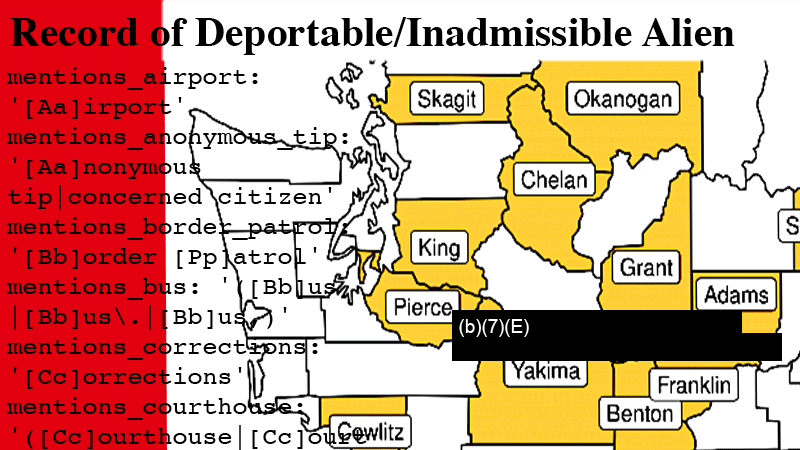How Data Scraping Provides Insights into Immigrant Arrests
 During the Trump administration (2017-2021), the Washington State detention and deportation pipeline for immigrants seemed to be getting more problematic. Washington has laws that prohibit local law enforcement officers (local police, sheriffs, people employed at jails) from giving information to ICE and CBP that would help them make civil immigration arrests. But their collaboration with federal agents seemed to happen anyway.
During the Trump administration (2017-2021), the Washington State detention and deportation pipeline for immigrants seemed to be getting more problematic. Washington has laws that prohibit local law enforcement officers (local police, sheriffs, people employed at jails) from giving information to ICE and CBP that would help them make civil immigration arrests. But their collaboration with federal agents seemed to happen anyway.
Some jails continued to request “place of birth” information, despite the prohibition, continued to share it with ICE and CBP agents, and even placed “immigration holds” on detainees to facilitate their arrest by the federal agents.
The University of Washington Center for Human Rights (UWCHR) sued for and was granted access to forms known as I-213, or “Record of Deportable/Inadmissible Alien,” which is generated whenever someone is apprehended by US Immigration and Customs Enforcement (ICE) and Customs and Border Protection (CBP). The forms supply quantitative and qualitative information that’s more specific—and useful—than the aggregated data supplied by ICE and CBP. The UWCHR ended up with more than 4,000 pages of I-213 forms. Each form has about 50 data fields and a multi-page narrative.
Fortunately for the UWCHR, HRDAG’s data scientist Tarak Shah and statistician Maria Gargiulo created a data processing pipeline that was able to handle the potentially overwhelming volume of files. They wrote the logic for processing and organizing the data, scraping all the text, slotting it into its respective fields in a data structure, and more. The team was able to analyze the scraped text and search for key words such as “jail” in order to gain insight into where immigration arrests are being made—and where the laws were being broken.
In 2020, the Center released their first report about the implementation and compliance of the 2019 law, focusing on county sheriffs and jails. The I-213 project is ongoing, and Neff and the UWCHR now have enhanced capacity to carry it out without direct help from HRDAG.
Further readings
University of Washington Center for Human Rights. 5 September, 2024.
The Border is Everywhere: Immigration Enforcement in the Contemporary Pacific Northwest
University of Washington Center for Human Rights. 11 August, 2021.
Protecting Immigrant Rights: Is Washington’s Law Working?
Related publications
HRDAG. Christine Grillo. 27 July, 2022.
Scraping for Pattern: Protecting Immigrant Rights in Washington State
Acknowledgments
This work was supported by the MacArthur Foundation and Open Society Foundations.
Image: David Peters.
See more from Applying machine learning to make sense of massive caches of data
